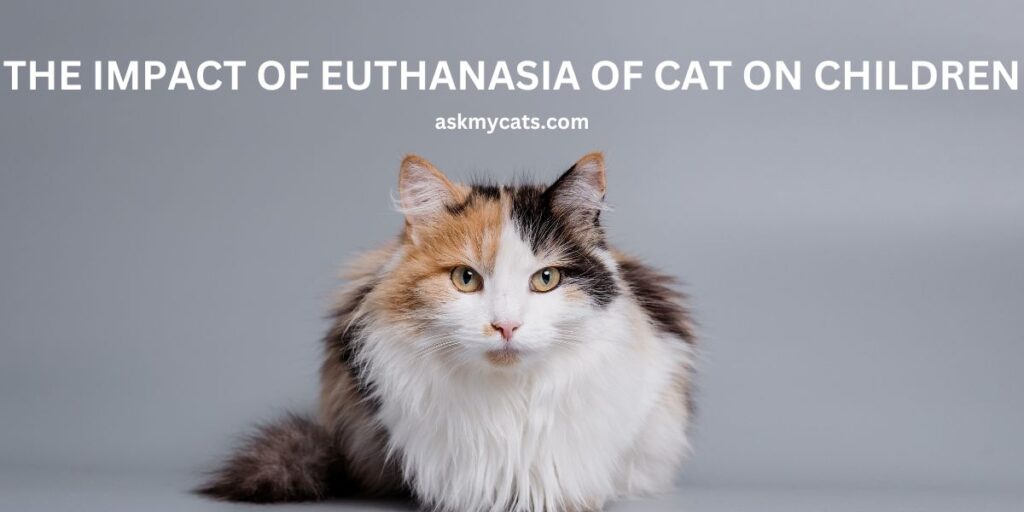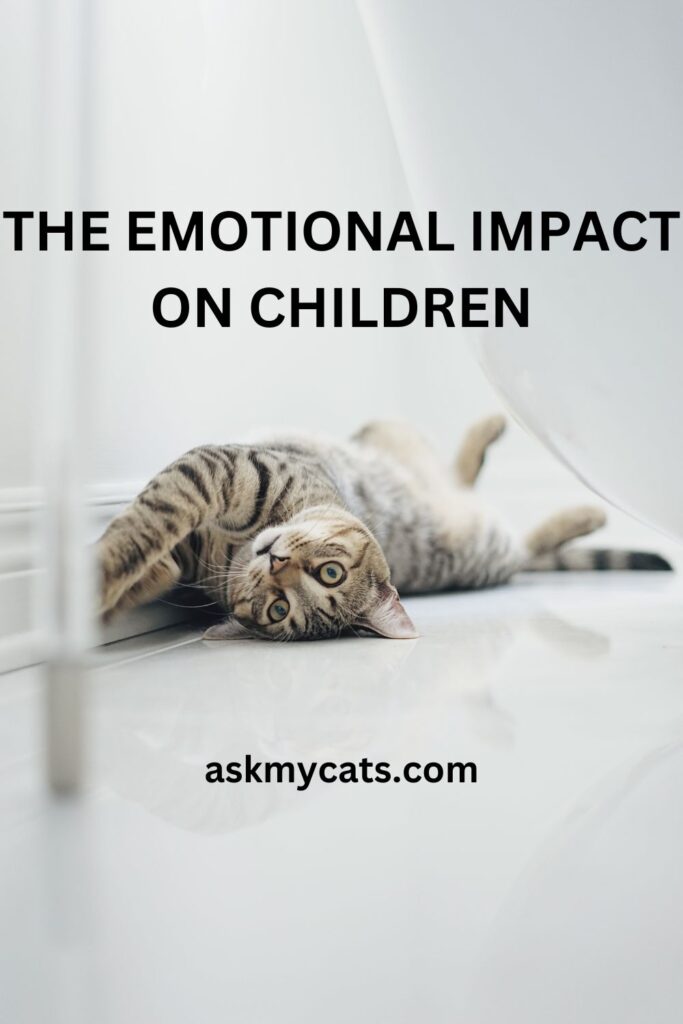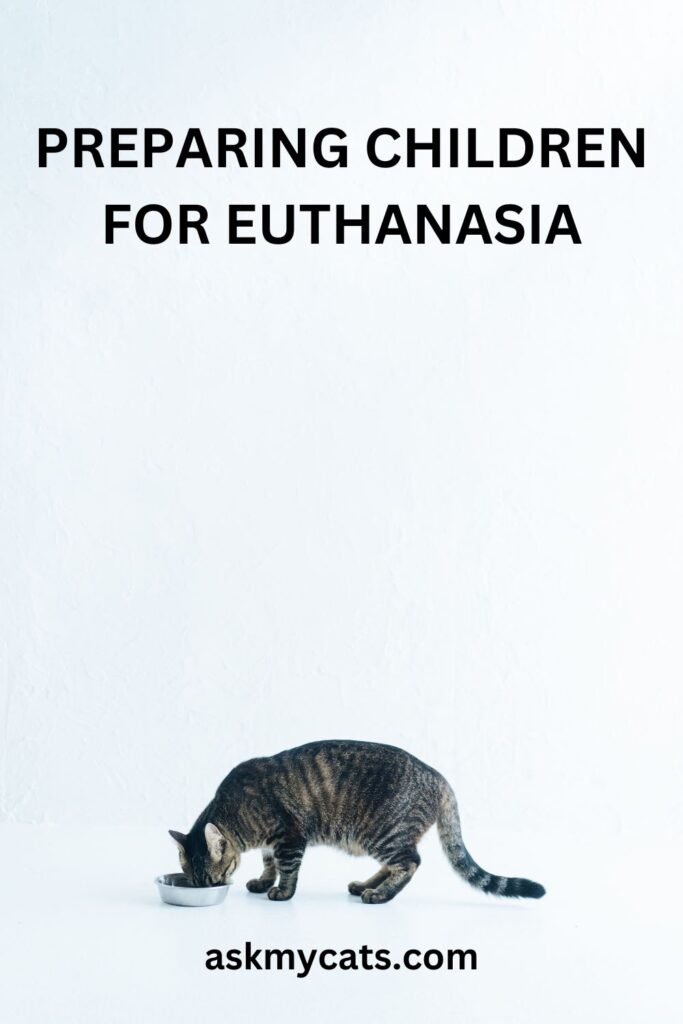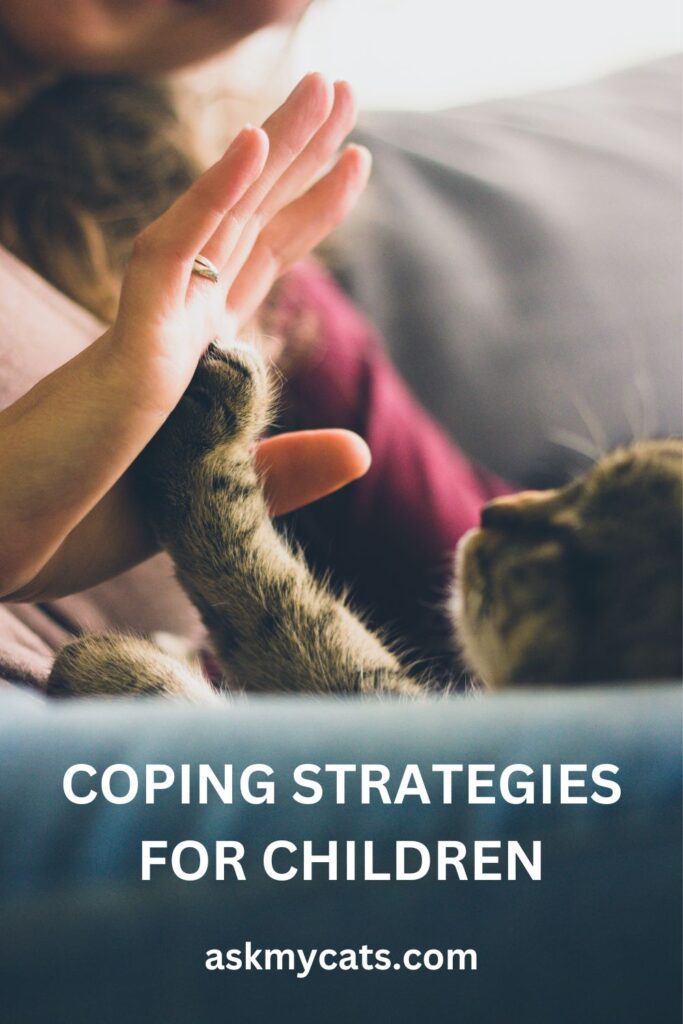The decision to euthanize a cat can be a difficult one for any family, but it can be particularly challenging when children are involved.
This article seeks to explore the psychological impact on children when a cat is euthanized, and how parents and caregivers can best support children during this difficult time.
Key Takeaways
- The decision to euthanize a cat can be emotional and difficult for children, who may experience grief, sadness, and confusion.
- Parents and caregivers can support children by providing accurate information about euthanasia and the loss of their pet cats, and by offering comfort and reassurance.
- Encouraging children to talk about their pet cats, share memories and stories, and create a special tribute or memorial can also help them process their grief.
- Preparing children for the euthanasia process by using age-appropriate language, involving them in decision-making, and creating opportunities for goodbyes and special memories can also be helpful.
- Practical coping strategies for children include creating a memorial, talking about their feelings, seeking professional help if necessary, and utilizing books, videos, or online resources.


Give Your Cat the Perfect Day
Get the Free Ebook!
The Emotional Impact on Children

The decision to euthanize a family cat can be a difficult and emotional one for children. Children may experience a range of emotions, including grief, sadness, and confusion.
They may feel a sense of loss and miss the companionship, comfort, and affection provided by their cat.
The loss of a cat can be particularly challenging for children as they may have had a strong bond with the animal and viewed it as a trusted friend and confidant.
The emotional impact on children can vary depending on their age, developmental stage, and previous experiences with loss.
Younger children may have a limited understanding of death and may struggle to comprehend why their cat is no longer with them. Older children may understand the finality of death but may still struggle with feelings of sadness, guilt, or anger.
It is important for parents and caregivers to provide children with accurate information about euthanasia and the loss of their pet cats.
Children may have questions about the process of euthanasia, the reasons behind the decision, and what will happen to their cat’s body.
Providing clear and honest answers to these questions can help to reduce confusion and provide children with a sense of understanding and control.
Supporting children during this difficult time is crucial. Parents and caregivers can offer comfort and reassurance to children, providing a safe space for them to express their emotions and feelings.
Encouraging children to talk about their pet cats, share memories and stories, and create a special tribute or memorial can also help them process their grief.
In addition to emotional support, parents and caregivers may want to seek professional help if children are struggling to cope with the loss of their pet cats.
A therapist or counselor can provide additional support and guidance to help children process their emotions and develop healthy coping strategies.
Must Read: What To Do After Cat Euthanasia?
Preparing Children for Euthanasia

Preparing children for the euthanasia process of their beloved cat is an important aspect of helping them to cope with the loss.
Communication is key in this process, and parents and caregivers can take several steps to help children understand what is happening and prepare for the end-of-life process.
When communicating with children about euthanasia, it is important to use age-appropriate language and be honest about what is happening.
Parents and caregivers should explain to children that their cat is sick or in pain and that the decision to euthanize them has been made to prevent further suffering.
It is also important to reassure children that euthanasia is a peaceful and painless process that will allow their cat to pass away peacefully.
Parents and caregivers may want to involve children in the decision-making process surrounding euthanasia. This could involve explaining the options available to them, such as palliative care or hospice, and asking for their input on the decision.
Involving children in the decision-making process can help them to feel a sense of control and ownership over the process, which can be empowering and help them to cope with their grief.
Preparing children for the loss of their pet cats is also important. Parents and caregivers may want to create opportunities for children to say goodbye to their pet cats and create special memories with them before the euthanasia process.
This could involve taking photos or creating a special memorial, such as a scrapbook or a painting. It is also important to talk to children about what will happen after their cat passes away, such as burial or cremation.
Interesting Read: Should I Stay With My Cat When It Is Euthanized?
Coping Strategies for Children

The loss of a cat can be a challenging and emotional experience for children, and it is important for parents and caregivers to provide them with practical coping strategies to help them process their emotions and grief.
Here are some practical tips for helping children cope with the loss of a cat:
- Create a memorial: Creating a memorial for the cat can be a way for children to honor their cat’s memory and cope with their loss. This could involve creating a special scrapbook or photo album, planting a tree or flowers in the cat’s memory, or making a donation to an animal rescue or welfare organization in honor of the cat.
- Talk about their feelings: Encouraging children to talk about their feelings and memories of their cat can help them process their emotions and begin to heal. Parents and caregivers can provide a safe and supportive environment for children to express their emotions and share their memories of their pet cats.
- Seek professional help if necessary: If children are struggling to cope with their grief, it may be helpful to seek professional help from a therapist or counselor. A mental health professional can provide additional support and guidance to help children process their emotions and develop healthy coping strategies.
- Utilize books, videos, or online resources: Books, videos, and online resources can be helpful tools for introducing the subject of cat loss to children and providing them with comfort and support. There are many resources available that are specifically designed for children, including books that explain the concept of death and loss in a gentle and age-appropriate way.
Must Read: How To Deal With Regret And Grief After Putting Cat To Sleep?
The Long-Term Effects
The long-term effects of euthanasia on children can be varied and can depend on a number of factors, such as their age, personality, and relationship with the cat.
Some common long-term effects of euthanasia on children include fear of losing another cat, guilt or regret, and avoidance of getting another cat.
When children experience the loss of a beloved cat through euthanasia, they may become fearful of getting another cat in the future.
They may be worried about experiencing the pain and grief of losing another cat and may avoid forming attachments to pet cats altogether. This fear can persist into adulthood and can impact their ability to form close relationships with pet cats or other people.
Children may also experience guilt or regret after the euthanasia of a cat, especially if they were involved in the decision-making process or felt that they could have done more to save their cat.
These feelings can linger and impact their emotional well-being for years after the event.
To help children understand that euthanasia is not a punishment and is an act of compassion, parents and caregivers can explain the decision-making process and the reasons for euthanasia.
They can reassure children that euthanasia was the best option to prevent further suffering for their cat and that it was an act of love and compassion.
It is important for parents and caregivers to provide children with emotional support and guidance in the aftermath of a cat’s euthanasia.
Interesting Read: Heartfelt Ideas for Cat Memorials
Frequently Asked Questions
How do you explain euthanizing a cat to a child?
You can clarify that the cat cannot recover from its condition and that euthanasia is the most humane way to end its suffering. Additionally, you can reassure the child that the veterinarian has done everything possible to help the cat and that it will pass away peacefully without experiencing any pain.
How can I explain to my 3-year-old child the death of a cat?
Since young children tend to interpret words literally, it’s crucial to use uncomplicated and truthful language. For instance, you may say, “Sasha’s heart stopped working, so she passed away. We won’t be able to see or touch her again.” It’s also important to communicate to your child that it’s normal to feel sad.
Final Words
The loss of a beloved cat can be a challenging experience for children, and euthanasia can add an additional layer of complexity to the grieving process.
However, by preparing children for the euthanasia process, offering emotional support and practical coping strategies, and helping them understand the reasons for euthanasia, parents and caregivers can help children navigate this difficult time with compassion and understanding.
While the long-term effects of euthanasia on children can be significant, with the right support and guidance, children can develop healthy ways to cope with their emotions and move forward in a positive way.
Interesting Read: Role of Veterinary Doctor In Euthanasia
